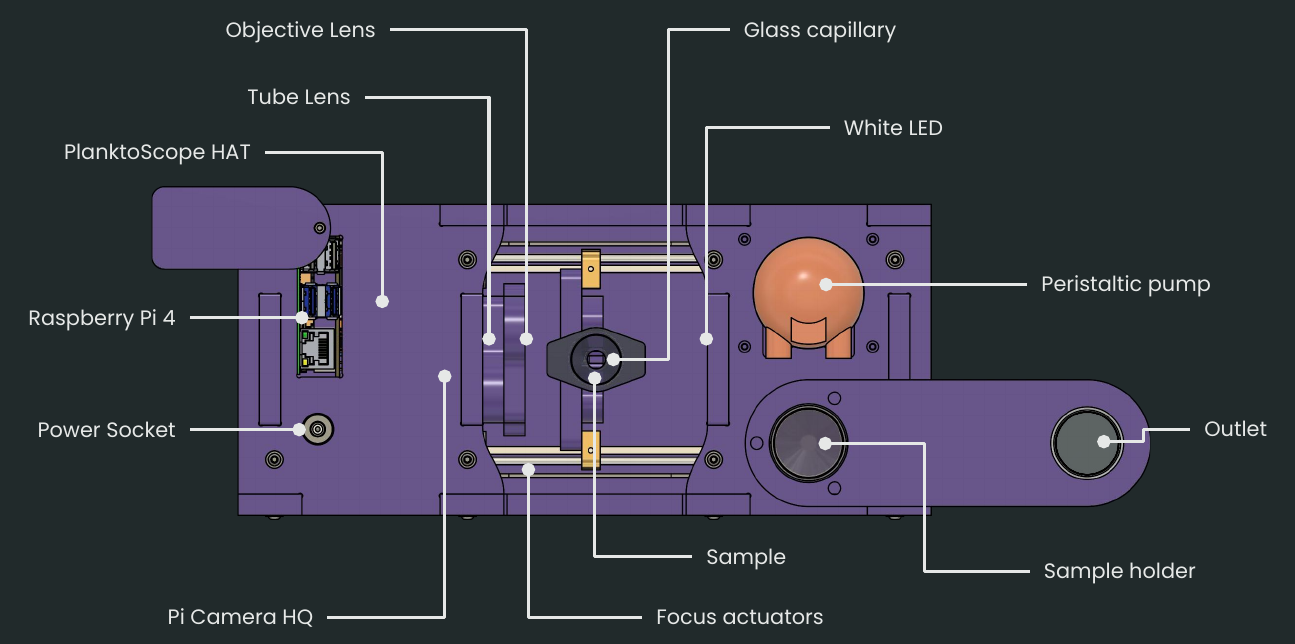3.4 KiB
Open and frugal modular imaging platform for citizen oceanography
What are Plankton?
"Drifting endlessly, midway between the sea of air above and the depths of the abyss below, these strange creatures and the marine inflorescence that sustains them are called 'plankton' — the wanderers" - Rachel Carson
Helping fix 30-50% of the worlds carbon dioxide and providing the foundation of a global food chain, plankton comprise the largest daily movement of biomass in the world as they traverse the oceans. The shapes, colors, and movements of these billions of creatures are as vast as the seas that sustains them. Understanding plankton is crucial to understanding the world around us, and the effect we have on that world. A hurdle for this type of study has been the sheer scale of area to explore, and the limited resources of research fleets and specialized equipment. By developing a way to scale up high quality visual exploration and documentation we can greatly increase our understanding of the complicated web of life around us, and how we are in turn impacting it.
What is a PlanktoScope?
The PlanktoScope is an open-source, affordable imaging platform for citizen oceanography. It's built around a Raspberry Pi, a couple of HATs, some stepper motors and a few centimeters of silicon tubes. Its cost is at about $800 in parts.
The goal of the PlanktoScope is to allow citizen to engage in scientific programs, either at sea or onshore. You can use the PlanktoScope to image the different species of Plankton living in a body of water.
Device specification
Size
- height: 150 mm
- wide: 350 mm
- depth: 150 mm
Hardware
- 4 Core ARM-Cortex-A72 Processor with 1,50 GHz
- 4 GB Arbeitsspeicher (depending on the purchased version)
- 64 GB Flash memory (depending on the purchased version)
- Sony IMX477R Image sensor with 12.3MP
- M12 mount optics with 16 and 25 mm lenses
- Automatic focus via linear guide
- automatic sampling via peristaltic pump
- the case is made of wood fiberboard
Software
- Debian based Embedded Linux operating
- Node-Red based user interface
- Python Image processing service and cloud connection
Characteristic
- Magnification ???
- Focus stage control
- Pump control
- Automatic image capture
- Automatic segmentation, optimization and object detection
- 4,200 images, 41,000 objects, ~ 1 minute
- Control via smartphone or tablet
License
- Hardware: CERN Open Hardware Licence
- Software: GNU General Public License
- Dokumentation: Creative Commons Attribution-ShareAlike
Certification
Areas of Application
- Plankton analysis of small animals and algae living in water
- Mobile use via external power supply
System Requirements
- a Web-Browser to control the device (like a Notebook, Smartphone or Tablet)

